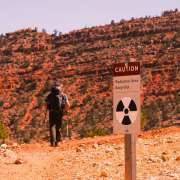The biggest security threat to the United States may not necessarily come from those hatched by known international terrorist groups but what currently lies unnoticed on its own soil.
Some 63,000 tons of highly toxic wastes generated by several years of nuclear power plant operations are currently sitting inside many nuclear power plants, posing increasing risk to nearby main population centers.
According to Kevin Kamps, radioactive waste specialist from watchdog group Beyond Nuclear, the huge amount of nuclear waste deposits could “probably be the single greatest security vulnerability in the United States.”
In an interview over an international cable news channel Friday, Kamps said that much of what needs to be done with nuclear wastes rests largely on getting the process mandated through legislation. “But it’s fallen on deaf ears in Congress,” he said.
Industry experts have put forward recommendations to ensure that nuclear wastes, which are also known as spent fuel, are kept at secured and fortified structures and away from main reactors. But apparently large amounts of waste currently sit near the reactors in large pools while some amount that were brought outside the plants were poorly stored.
Currently, a number of these power plants are situated near major population centers like Washington, Boston, New York City, Philadelphia and Chicago, which have nuclear power plants inside 50-mile fallout zone.
Meanwhile, some industry players and government officials claim waste handling and storage had been properly managed over the years.
David McIntyre, a spokesman for the government’s Nuclear Regulatory Commission said that even though spent fuel is safe, it will nonetheless undertake a comprehensive review of waste handling and storage, in light of the recent events in Japan.









